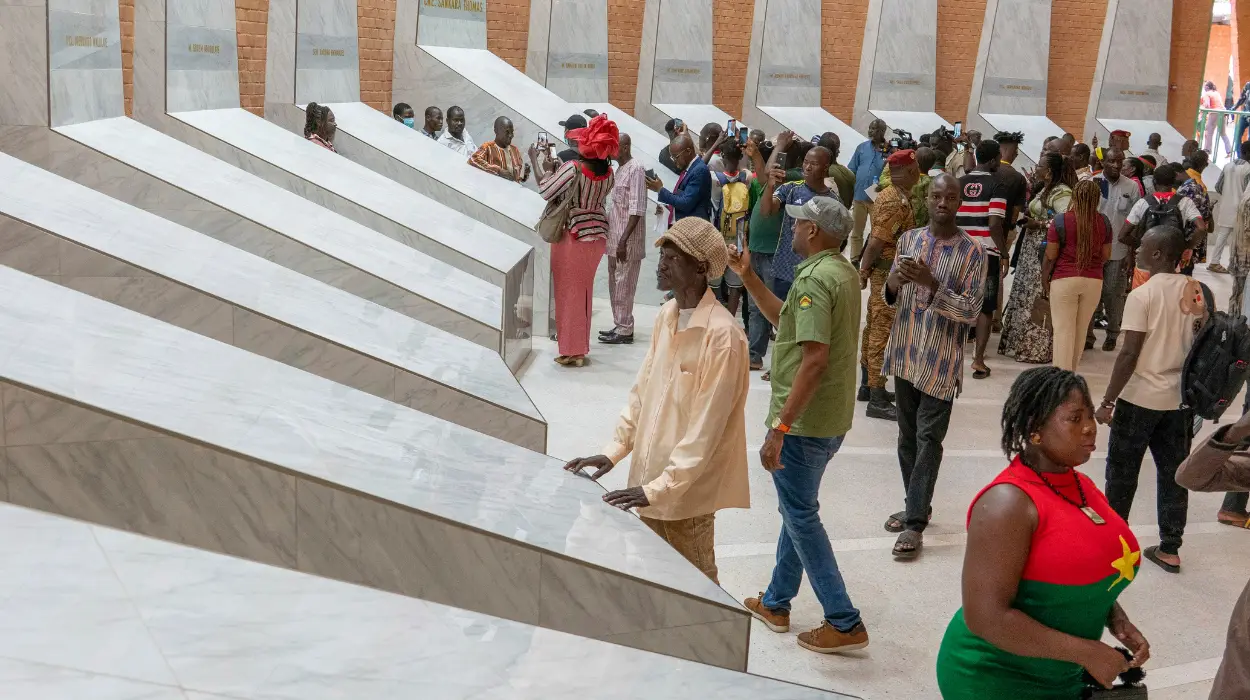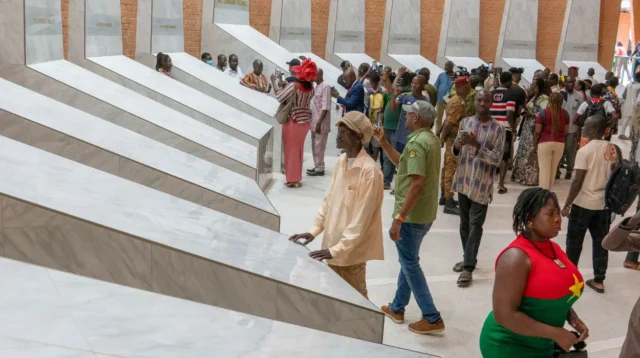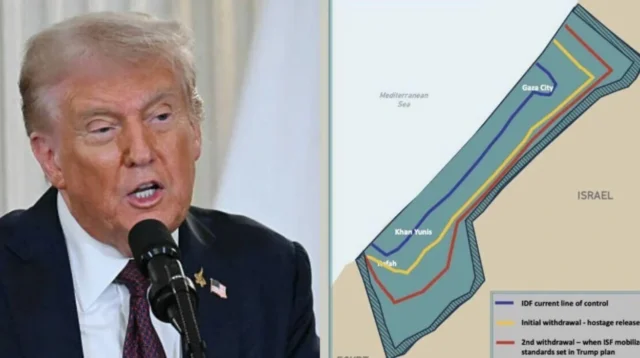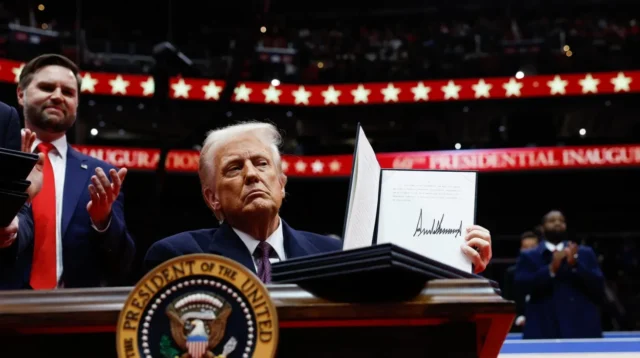The U.S. authorities introducing a 15 000 visa bond is a significant change in the organization of global mobility, particularly concerning the African travelers. In terms of the deterrence of visa overstays, the bond essentially re-optimizes the cost-benefit analysis of traveling as a visitor with a given country of origin. Despite being described as a pilot program, its consequences are much more than administrative processing. Its financial requirement changes the accessibility perception and adds an element of transactions to an otherwise discretionary, trust-based process of issuing visas.
To most, the connection makes travelling a risky and an expensive activity. It is meant to act as a draw to follow the law and visa requirements, and it is also a filter that narrows down the applicants not on intent or merit, but on liquidity. This change introduces inequality into the policy paradigm, and it formed a tiered structure of access to traveling, which is associated with wealth. Consequently, people who want to attend conferences, visit their families, or seek education might end up being marginalized by the expenses that are not commensurate with the justifiability or intent of their trip.
Administrative Mechanisms and Practical Complications
The mechanics of the bond have a close relationship with one-on-one visa interviews, in which the consular officers establish eligibility and bond application. After the approval, the bond should be paid prior to the issuance of the visa, which is usually done at the centralized digital level. The process, though refundable, is not very consistent in embassies and consulates. The refunds are made based on the evidence of departure and meeting the criteria of visa conditions which may be undermined by the delay in travel or the presence of unforeseen situations or errors in the documents.
There is also doubt regarding when the refund will be made and this is another factor that is demoralizing potential travelers. Disputes that require cases to be appealed have brought into question opaque appeal procedures by advocacy groups. Further, even the technical lags in the payment processing have already been recorded in 2025, raising the concern that even the compliant travelers are likely to lose money.
Aggregated Travel Costs and Socioeconomic Impact
The $15,000 bond, when added to the current charges such as application fees and service fees, makes the total cost of traveling very expensive to the majority of middle-income earners in Africa. One applicant may spend up to 17, 000, and not even have a flight booked. Such prohibitive costs are bound to distort the travelling patterns to avoid spontaneous or immediate vacation and may redirect the traffic to the more reachable destinations.
The three of the affected countries; Nigeria, Sudan and Eritrea have noted a drastic reduction in student visa applications since the program was implemented. On the same note, the African tour operators have observed a decline in the demand towards U.S. bound packages indicating that the policy is already affecting consumer behavior. In the case of small businesses and family-owned enterprises, this transformation does not only mean the fall of tourism, but it symbolizes a restructuring of established traveling and trading routes.
Broader Economic and Developmental Repercussions
The effect of the $15, 000 visa bond on the travel industry can appear limited to that sector, but with secondary effects that affect some economic development nodes. Diaspora-led investment projects, African-American business partnerships and U.S.-based university recruiting in Africa are all likely to wane on the burden of more travel friction. And as fewer people are willing or able to assimilate the bond, informal business relationships are apt to fall apart once they are fostered through face-to-face meetings.
A critical part of the global market also stands to be lost by the hospitality and education sector in the U.S. By 2023, African students registered more than 45,000 at U.S. institutions of higher learning. The bond is expected to reduce that number by 15 percent in 2025, according to the projections of the National Association of Foreign Student Advisers. In addition to economic losses, this deteriorates the cross-cultural interaction upon which diplomatic and academic relations are based.
Mobility as a Development Channel
The policy cuts across a wider discourse on development where mobility is not seen as merely economic freedom but also as a source of knowledge sharing and innovation. Whenever there is a barricade in the form of money, the same is experienced with respect to the capacity of the developing nations to interact effectively with the world systems. The students, entrepreneurs, and scholars who have been key to Africa in the uphill path are confronted with new challenges that may slacken or derail development processes.
Moreover, there are often remittances, investments and transfer of skills under the remit of ease of traveling, which is a result of diaspora ties. Mobility restriction that is based on cost does not only destroy the personal connections but it also breaks the channels through which the economic and cultural capital returns to the people of origin.
Diplomatic Signals and Bilateral Repercussions
The diplomatic implications of the 15,000 dollar visa bond are beyond mere administrative chagrin. The African governments such as Kenya and Ghana have filed formal complaints in their U.S embassies that the policy is discriminatory and poses a threat to equal international interaction. According to the Ministry of International Relations of South Africa, it was a retrogressive strategy that would put the country at risk of diplomatic retaliation.
In 2025, diplomats in Addis Ababa and Abuja started to talk of reassessing bilateral visa policies with the U.S and there was a possibility of reciprocal restriction or increased scrutiny of American visitors. Although all of them have not yet taken retaliatory action, the mood of the discussion has changed significantly towards a guarded cooperation, as opposed to an automatic alignment.
Shaping Multilateral Engagements
The bond has been elevated at forums like African Union Summit and the United Nations Economic Commission for Africa where it has been used as one of the case studies in mobility inequality. Analysts conclude that the policy demonstrates larger trends of exclusion in international traveling structures, in which trust is not evenly dispersed, and is usually based on economic status as opposed to past affiliation or behavioral patterns.
Increased pressure is mounting in support of an African voice on mobility rights, which seeks just treatment on international travelling standards. Such framing presents the visa bond as not a national policy experiment only, but sets the precedent of how global North South relations would develop in the next decade.
The Policy’s Place in a Changing Global Migration Debate
The advocate of the bond proposes its discouraging effect in minimizing overstays stating that financial responsibility enhances border integrity. Critics, however, criticize the assumption that high prices make it lawful conduct. Historical data on visa overstays are not always related to income level or country of origin, which implies that blanket policies are ineffective and fail to reflect the true risk factors.
The broader challenge lies in balancing legitimate security objectives with the moral and strategic imperative to remain an open society. At a time when international travel is becoming a foundation for innovation, education, and diplomacy, overly restrictive measures may prove counterproductive to national interests in the long term.
Public Discourse and Transparency
In U.S. media coverage throughout 2025, public opinion remains divided. Immigration-focused outlets have emphasized the bond’s potential to deter misuse of the visa system, while civil liberties organizations raise alarms about transparency and procedural fairness. Investigative reports from ProPublica and The Intercept have documented cases where refund processing delays stretched beyond six months, despite traveler compliance, reinforcing concerns about the policy’s administrative fairness.
Calls for an independent review mechanism and clearer refund timelines are growing, particularly from law associations and travel rights advocates. Whether these reforms materialize will depend in part on the political will to accommodate both control and compassion within the U.S. immigration system.
The next phase of the $15,000 visa bond’s implementation will reveal whether it can withstand scrutiny not only in terms of effectiveness but also legitimacy. As African travelers, civil society, and governments weigh the policy’s implications, its durability may hinge less on deterrence metrics and more on the perceived equity of a system increasingly defined by its barriers. The future of international mobility, especially between Africa and the United States may be shaped as much by financial prerequisites as by the shifting currents of trust, diplomacy, and the right to move.





